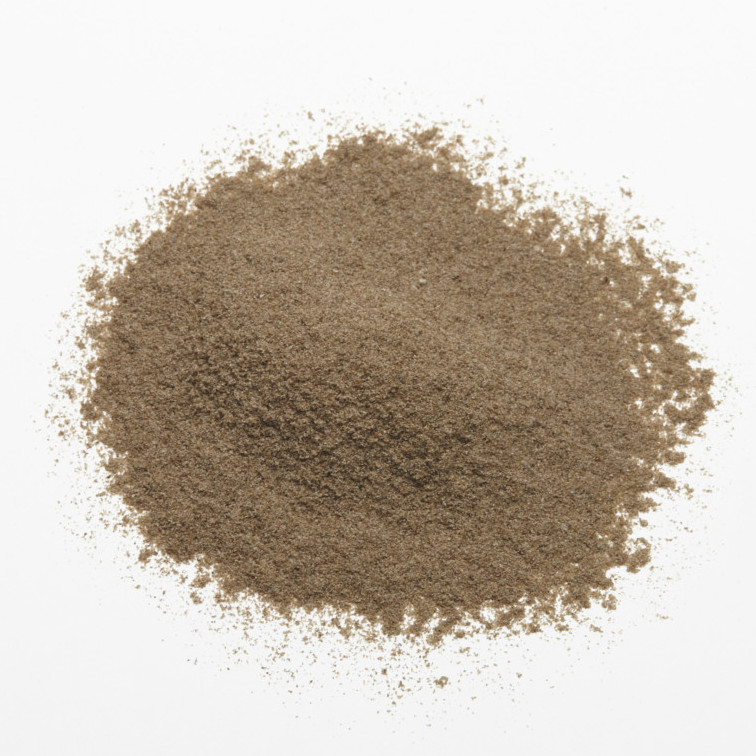
Chia Flour
Also known as chia meal or defatted chia flour
What is Chia Flour?
Chia flour is a gluten-free fine powder made from ground chia seeds. It is highly nutritious and is commonly used to replace wheat flour and eggs in sweet and savory baked goods such as bread, flatbread, cakes, rolls and muffins.1,3
In baked goods, chia flour imparts a mild nutty flavor, a slightly gummy texture and a greyish tone to the crumb. Commercially, available forms include:3
- Wholemeal
- Protein concentrate
- Defatted
Origin
Chia seed (Salvia hispanica L) is a pre-columbian crop from Central America, mainly southern Mexico and Guatemala. For a time, it was forgotten crop from the Spaniards’ arrival in Central America until the late 20th century. However, now it has found a newfound popularity due to the increased interest in healthier and more sustainable diet alternatives.1,2
The absence of gluten in chia seeds make them an attractive option for celiacs diet to replace wheat flour or as an egg alternative for vegan diets.2
Function
This flour can be used for several purposes in baked goods:1,2
- Flour substitution: partial or total substitution of wheat flour with acceptable results.
- Flavor: imparts a nutty mild flavor.
- Color: imparts a greyish tone to the crumb.
- Thickening agent: hydrated mucilage generates a gum with powerful thickening properties similar to guar gum.
- Water absorption: absorbs moisture reducing water activity, and thus aiding in staling.
- Egg replacement for vegan products.
- Oil replacement
Nutrition
Chia flour has a high nutritional value due to its high content of:1,3
- Protein: 31%
- Crude Fiber: 29%
- Omega 3 fatty acid: 8-10%
- Antioxidants
However, some chia concentrate products can have over 50% fiber (soluble and insoluble) and 25% protein, depending on the manufacturing process. These attributes make this flour a valuable ingredient for reducing Glycemic Index, improving gut and immune health. Also, it can help lower the risk of cardiovascular diseases.1
Commercial production
Chia flour is produced through the following process:4
- Weighing seeds and cleaning
- Cold pressing: the seeds are press- or screw-crushed to remove the oil
- Collection and grinding: the resulting cake is collected and ground.
- Sieving to desired particle sizes
- Packaging and storage
Application | How to Bake with Chia Flour
It is most commonly used as a partial or full replacement for wheat flour often in combination with other gluten-free flours such as soy, rice or almond.3 When using chia flour as wheat flour substitute:5
- Total substitution, chia flour:wheat flour, 1:1
- In gluten free mixes, the ratio is typically 1:3
- Hydrate chia flour before use, to increase water holding capacity
Effects of chia flour on baked systems:3
- Reduces dough strength and extensibility.
- Increases water absorption, mixing tolerance and tenacity of dough due to its high fiber content, but reduces dough extensibility.
- Increases development time.
- Decreases dough stability.
- Reduces loaf volume.
- Increases bread crumb hardness.
Regulations
Chia is considered a food product and not a food additive, thus is not subject to specific FDA regulations.6
In the EU, chia seeds are considered a novel food product and their direct addition to foods is considered safe in a variety of food products including bakery. In food products which require heat treatment above 120oC, chemical analysis is required for potential acrylamide development.7
References
- Benexia. Chia Checks All The “Big Trend” Boxes: Clean And Sustainably Sourced, High In Fiber, Supports Gut Health And Immunity. Benexia, Vitacura, pp. 1-5. Accessed 17 Apr 2021.
- Coorey, Ranil, et al. “Gelling Properties of Chia Seed and Flour.” Journal of Food Science, vol. 79, no. 5, 2014, doi:10.1111/1750-3841.12444.
- Martinez, M.M, and Gomez,M. Current Strategies to Improve the Nutritional and Physical Quality of Baked Goods. MDPI-Multidisciplinary Digital Publishing Institute, 2020.
- Singh, K, Mridula, D, Rehal, J & Barnwal, P. “Flaxseed: A Potential Source of Food, Feed and Fiber”. Critical reviews in food science and nutrition. 51. p.p 210-22. 2011. 10.1080/10408390903537241.
- “Cooking With Chia Flour – The Nutty Scoop From Nuts.Com.” Blog.Nuts.Com, 2011, https://blog.nuts.com/cooking-with-chia-flour/#:~:text=To%20make%20chia%20flour%2C%20all,re%20ready%20to%20use%20it.&text=Chia%20flour%20also%20makes%20a,in%20vegan%20and%20vegetarian%20recipes
- Cassiday, L. “Chia: Superfood Or Superfad?”. Aocs.Org, 2017, https://www.aocs.org/stay-informed/inform-magazine/featured-articles/chia-superfood-or-superfad-january-2017?SSO=True . Accessed 17 Apr 2021.
- European Commission (EC). Commission Implementing Regulation (EU) 2020/24 of 13 January 2020 authorising an extension of use of chia seeds (Salvia hispanica) as a novel food and the change of the conditions of use and the specific labelling requirements of chia seeds (Salvia hispanica) under Regulation (EU) 2015/2283 of the European Parliament and of the Council and amending Commission Implementing Regulation (EU) 2017/2470. Official Journal of European Communities, 13 Jan 2020.

